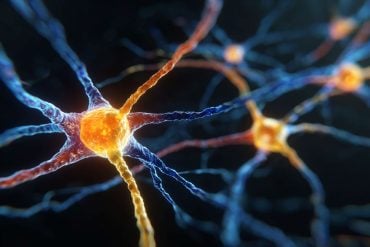Summary: Researchers introduced a groundbreaking non-invasive brain stimulation technique called Patterned Low-Intensity Low-Frequency Ultrasound (LILFUS). This innovative method can precisely target and modulate specific brain regions, offering a promising alternative to traditional magnetic, electrical, and surgical brain stimulation methods with fewer risks.
LILFUS activates mechanosensitive calcium channels in astrocytes, influencing neural plasticity and enabling the control of brain function for improved motor skills and potential treatment applications in various neurological disorders. This advancement represents a significant leap in neurotherapy, with the potential to treat conditions like depression and enhance cognitive functions without the need for invasive procedures.
Key Facts:
- Non-Invasive and Precise: LILFUS can target deep brain tissues with high precision, overcoming the limitations of existing brain stimulation methods.
- Mechanism of Action: The technique works by modulating neural plasticity through the activation of mechanosensitive calcium channels in astrocytes.
- Broad Therapeutic Potential: Initial studies show LILFUS can enhance motor skill learning, suggesting applications in rehabilitation therapies for stroke and motor impairments, with potential for treating a wide range of neurological disorders.
Source: Institute for Basic Science
The human brain’s adaptability to internal and external changes, known as neural plasticity, forms the foundation for understanding cognitive functions like memory and learning, as well as various neurological disorders.
New research conducted by a team led by Dr. PARK Joo Min of the Center for Cognition and Sociality within the Institute for Basic Science (IBS) unveils a novel technique that could transform the treatment landscape for brain disorders.

The team developed a non-invasive brain stimulation method called Patterned Low-Intensity Low-Frequency Ultrasound (LILFUS), which holds tremendous potential for inducing long-lasting changes in brain function.
Traditionally, magnetic and electrical brain stimulation methods have been used to modulate brain function. However, these methods come with inherent limitations that restrict their spatial resolution and penetration depth, making it challenging to precisely stimulate specific brain regions with optimal efficacy.
More invasive methods, such as those that require surgical procedures, exhibit superior control and therapeutic effects for specific deep brain stimulation, but they come with risks such as tissue damage, inflammation, and infection. These limitations have fueled the search for alternative approaches that can overcome these constraints and provide more efficient and precise modulation of brain function.
In the latest study unveiled by the IBS, researchers used ultrasound to enable precise stimulation of specific brain areas. Unlike electromagnetic waves, ultrasound has the advantage of being able to penetrate deep into the brain tissues.
The researchers discovered that ultrasound stimulation can modulate neural plasticity – the brain’s ability to rewire itself – through the activation of key molecular pathways. Specifically, the study pinpointed the ultrasound’s effect on mechanosensitive calcium channels in astrocytes, which controls the cells’ ability to uptake calcium and release neurotransmitters.
LILFUS was designed based on specific ultrasound parameters that mimic the brainwave patterns of theta (5 Hz) and gamma (30 Hz) oscillations observed during learning and memory processes.
The new tool allowed the researchers to either activate or deactivate specific brain regions at will – intermittent delivery of the ultrasound was found to induce long-term potentiation effects, while continuous patterns resulted in long-term depression effects.
One of the most promising aspects of this new technology is its ability to facilitate the acquisition of new motor skills. When the researchers delivered ultrasound stimulation to the cerebral motor cortex in mice, they observed significant improvements in motor skill learning and the ability to retrieve food.
Interestingly, researchers were even able to change the forelimb preference of the mice. This suggests potential applications in rehabilitation therapies for stroke survivors and individuals with motor impairments.
The implications of this research extend far beyond motor function. It may be used to treat conditions such as depression, where altered brain excitability and plasticity are prominent features.
With further exploration, LILFUS could be adapted for various brain stimulation protocols, offering hope for various conditions ranging from sensory impairments to cognitive disorders.
Dr. Park stated, “This study has not only developed a new and safe neural regulation technology with long-lasting effects but has also uncovered the molecular mechanism changes involved in brainwave-patterned ultrasound neural regulation.”
He further conveyed, “We plan to continue follow-up studies to apply this technology for the treatment of brain disorders related to abnormal brain excitation and inhibition and for the enhancement of cognitive functions.”
About this brain stimulation and neurotech research news
Author: William Suh
Source: Institute for Basic Science
Contact: William Suh – Institute for Basic Science
Image: The image is credited to Neuroscience News
Original Research: Open access.
“Long-lasting Forms of Plasticity through Patterned Ultrasound-induced Brainwave Entrainment” by PARK Joo Min et al. Science Advances
Abstract
Long-lasting Forms of Plasticity through Patterned Ultrasound-induced Brainwave Entrainment
Achieving long-lasting neuronal modulation with low-intensity, low-frequency ultrasound is challenging. Here, we devised theta burst ultrasound stimulation (TBUS) with gamma bursts for brain entrainment and modulation of neuronal plasticity in the mouse motor cortex.
We demonstrate that two types of TBUS, intermittent and continuous TBUS, induce bidirectional long-term potentiation or depression-like plasticity, respectively, as evidenced by changes in motor-evoked potentials.
These effects depended on molecular pathways associated with long-term plasticity, including N-methyl-d-aspartate receptor and brain-derived neurotrophic factor/tropomyosin receptor kinase B activation, as well as de novo protein synthesis.
Notably, bestrophin-1 and transient receptor potential ankyrin 1 play important roles in these enduring effects.
Moreover, pretraining TBUS enhances the acquisition of previously unidentified motor skills. Our study unveils a promising protocol for ultrasound neuromodulation, enabling noninvasive and sustained modulation of brain function.







